Laura Ashley
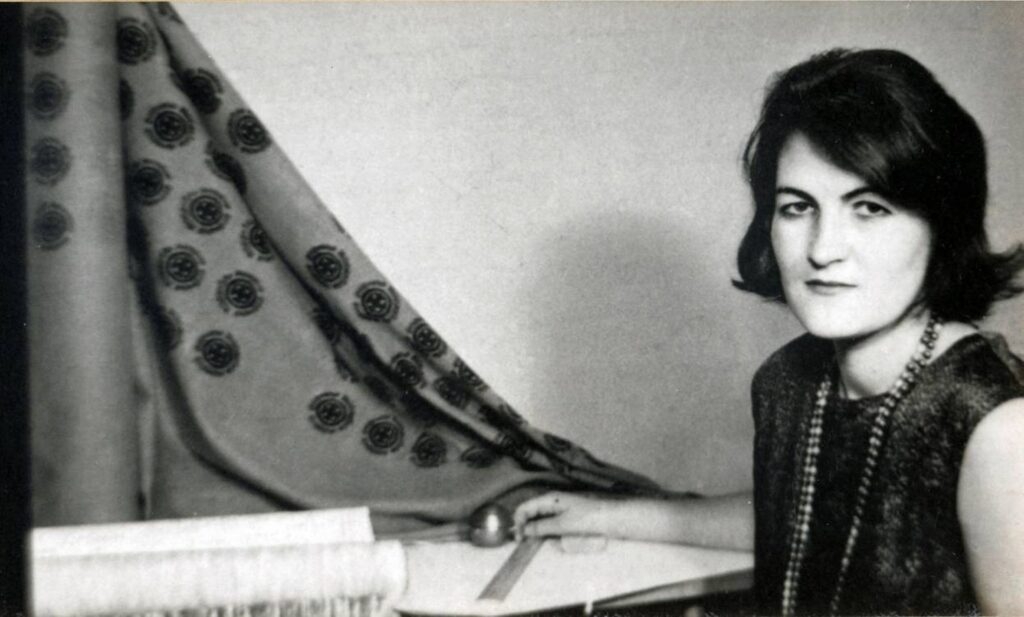
LAURA ASHLEY was a Welsh fashion designer and businesswoman who achieved renown for her genteel, Victorian-inspired fashions in women’s clothes and for her English Country manor style of furnishings for homes.
The world-famous Laura Ashley style is characterised by romantic English designs — often with a 19th Century rural feel — and the use of natural fabrics.
Her name had in her lifetime become synonymous with small, repetitive overall patterns and a graceful simplicity in women’s styles. Her dresses and blouses were noted for their Victorian-like high necks and full sleeves, the severity relieved by lace and ruffles.
Particularly characteristic was her soft, floppy, wool felt hat with a broad flexible brim that could be worn down over the eyes and ears or pushed back so as to reveal the forehead.
It became common to speak of a ‘Laura Ashley look’, a term applied to her garments, fabrics, and interior designs and even to the appearance of the young, expressionless, fresh-faced women who modeled her clothes.
She originally made furnishing materials in the 1950s, expanding the business into clothing design and manufacture in the 1960s.
Laura Ashley preceded a generation of American designers working in a similar, restrained, classic style: Ralph Lauren, Calvin Klein, Ann Klein, and Perry Ellis. Although the volume of her retail business may have been less than that of other well-known clothes stylists, no other had quite her special influence or lent his or her name so definitively to an immediately recognizable look.
The Laura Ashley look in home design, with its concentration on miniature and mid-sized floral patterns and its understated use of ornamental touches, provided a comfortable relief to the unrelieved starkness of modernism.
Her life in the Welsh and English countryside, amidst farms and villages, clearly influenced the combination of Puritan function and Victorian nostalgia of her designs. “Living quite remotely as I have done,” she once said, “I have not been caught up with city influences and we just developed in our own way.”
Born Laura Mountney in Dowlais, Merthyr Tydfil, on September 7, 1925, to Welsh parents living in London, her mother returned home to allow her daughter to be born in Wales at her grandmother’s home in Station Terrace.
She was raised in a civil service family as a strict Baptist. The chapel she attended in Dowlais (Hebron) was Welsh language and although she could not understand it, she loved it, especially the singing.
Educated at Marshall’s School in Merthyr Tydfil until 1932, she was then sent to the Elmwood School, Croydon. She was evacuated back to Wales aged 13, but with so many World War II evacuees there were no school places left and she attended Aberdare Secretarial School.
In 1942, at age 16, she left school and served in the Women’s Royal Naval Service. A major influence on her later dress designing was her uniform as a Wren. She said: “The uniform was a very good quality navy gabardine and you could press it and wear it with a clean, white cotton shirt and collar and tie. There was a nice, cheeky little hat and comfortable black leather shoes.”
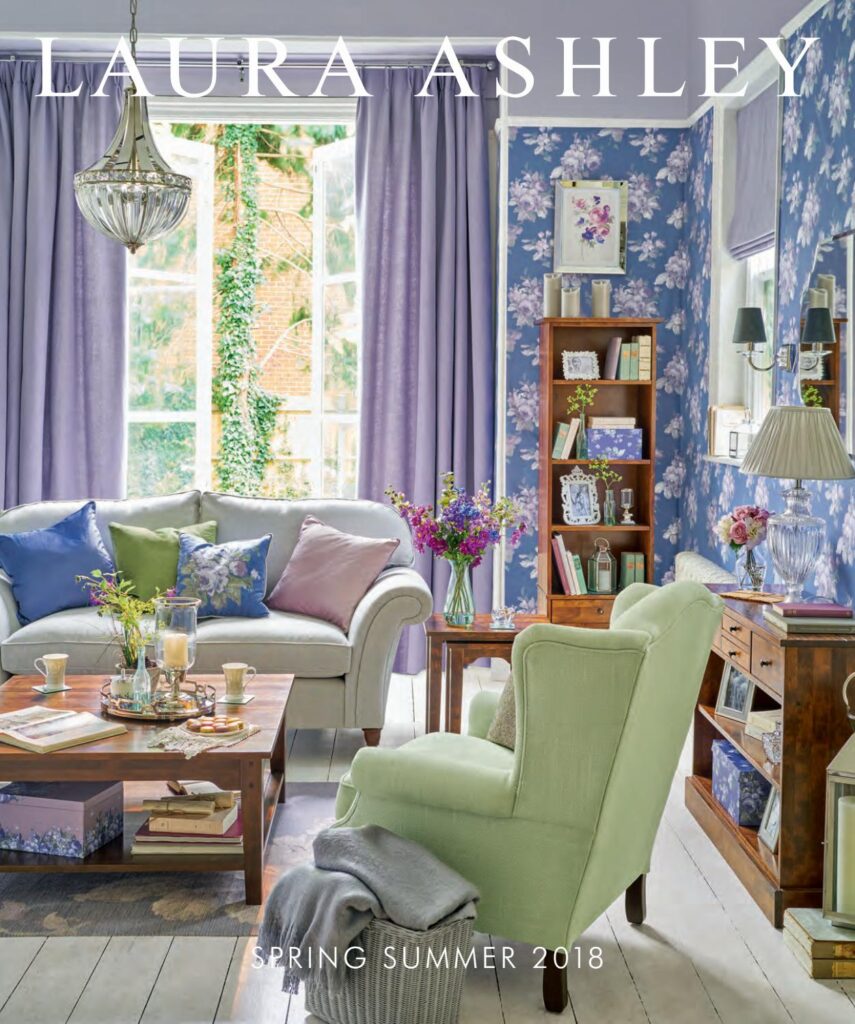
During this period she met engineer Bernard Ashley at a youth club in Wallington. After the war, Bernard was posted to India with the Gurkhas and the pair corresponded by letter. From 1945 to 1952, she worked as a secretary for the National Federation of Women’s Institutes in London, marrying Bernard in 1949.
While working as a secretary and raising her first two children, Ashley undertook some development work for the Women’s Institute on quilting. Revisiting the craft she had learnt with her grandmother, she began designing headscarves, napkins, table mats and tea-towels which Bernard printed on a machine he had designed in their attic flat at Cambridge Street, Pimlico.
The couple had invested £10 in wood for the screen frame, dyes and a few yards of linen. Ashley’s inspiration to start producing printed fabric came from a Women’s Institute display of traditional handicrafts at the Victoria & Albert Museum.
When Ashley looked for small patches carrying Victorian designs to help her make patchworks, she found no such thing existed. Here was an opportunity, and she started to print Victorian-style headscarves in 1953.
The scarves quickly became successful – retailing both via mail order and at high street chains such as John Lewis – and Bernard left his city job to print fabrics full-time.
The company was originally registered as Ashley Mountney (Laura’s maiden name), but Bernard changed the name to Laura Ashley because he felt a woman’s name was more appropriate for the type of products they were producing. The new company moved to Kent in 1955, but when the third of their four children was born, the family moved to Wales in 1960.
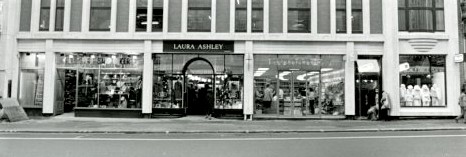
Laura Ashley’s first shop was opened at Maengwyn Street, Machynlleth, Montgomeryshire, in 1961. The Laura Ashley association is commemorated by a small plaque. The shop sold locally-produced honey, walking sticks, as well as the couple’s own products.
Here Laura worked with a seamstress to introduce their first forays into fashion, producing smock-like shirts and gardening smocks. The family lived above the shop until moving to Carno, Montgomeryshire. They first set up in the vacant social club, but moved in 1967 to the local railway station, which had been closed two years earlier, Carno becoming the headquarters of the firm’s international operations.
Laura Ashley’s success was quick and extraordinary. Her fabrics were first sold in two of the smaller, but highly fashionable London department stores, Heal’s and Liberty’s, both of which had a tradition of featuring thoughtfully designed and esthetically pleasing objects.
Towards the end of the 1960s Ashley opened her first retail store in Kensington, London. It was marked by natural wood floors, cabinets, and counters; trim painted in a deep blue-green; old-fashioned lounge chairs; and a general air of elegant informality.
This enterprise was followed by the establishment of numerous outlets overseas, including shops in Canada and Australia and later in continental Europe and the United States. The first American shop opened in 1974 in San Francisco.
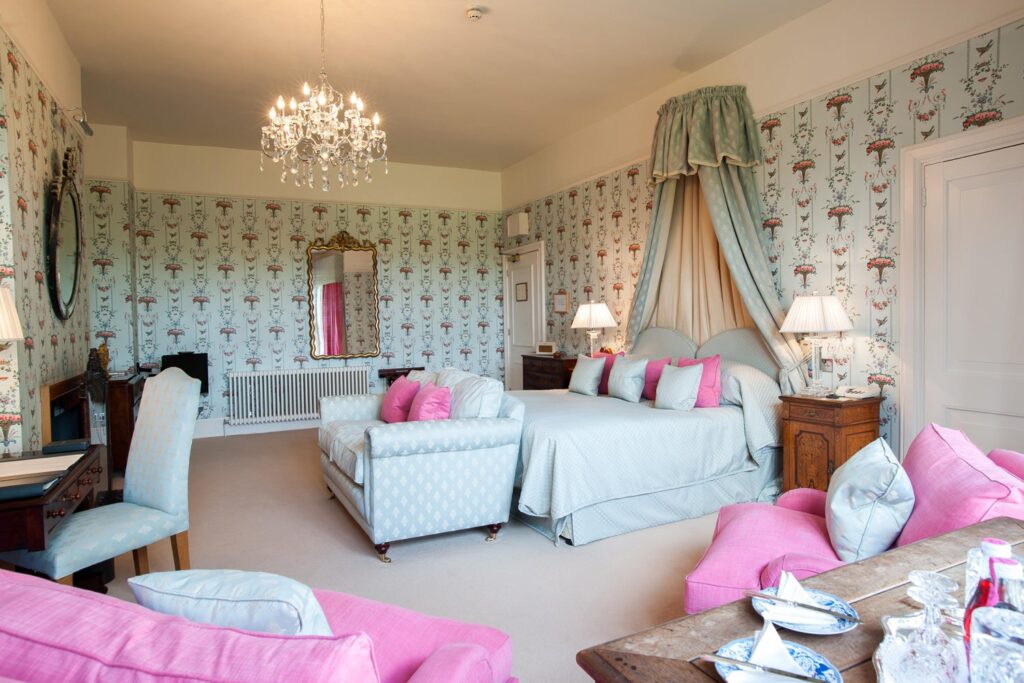
As her operation expanded, Laura Ashley became a tax exile, living in Brussels and France. By the time of her death there were over 200 Laura Ashley stores throughout the world, each looking much like the original one. The firm had 4,000 employees. In 1984 the stores alone grossed $130,000,000.
One of her admirers was known to be the late trend-setting Princess Diana, the former wife of the Prince of Wales, heir to the British throne.
In the 1980s, Laura Ashley realised a long-held ambition when she opened a shop in Cardiff, the capital city of Wales. The flagship Cardiff store remined open until 2015 when it was closed by the company, citing an “on-going store realignment programme.”
In 1984, a Laura Ashley factory opened in Newtown, Powys, creating 500 jobs, and in early 1985 another factory opened in Gresford, near Wrexham, which was followed with the opening of the first shop in Japan, in Tokyo.
Laura and Bernard Ashley’s four children were all involved with the business. David, the eldest son, designed the shops; one of the daughters, Jane, was the company photographer; another daughter, Emma, and their second son, Nick, were part of the company’s fashion design team.
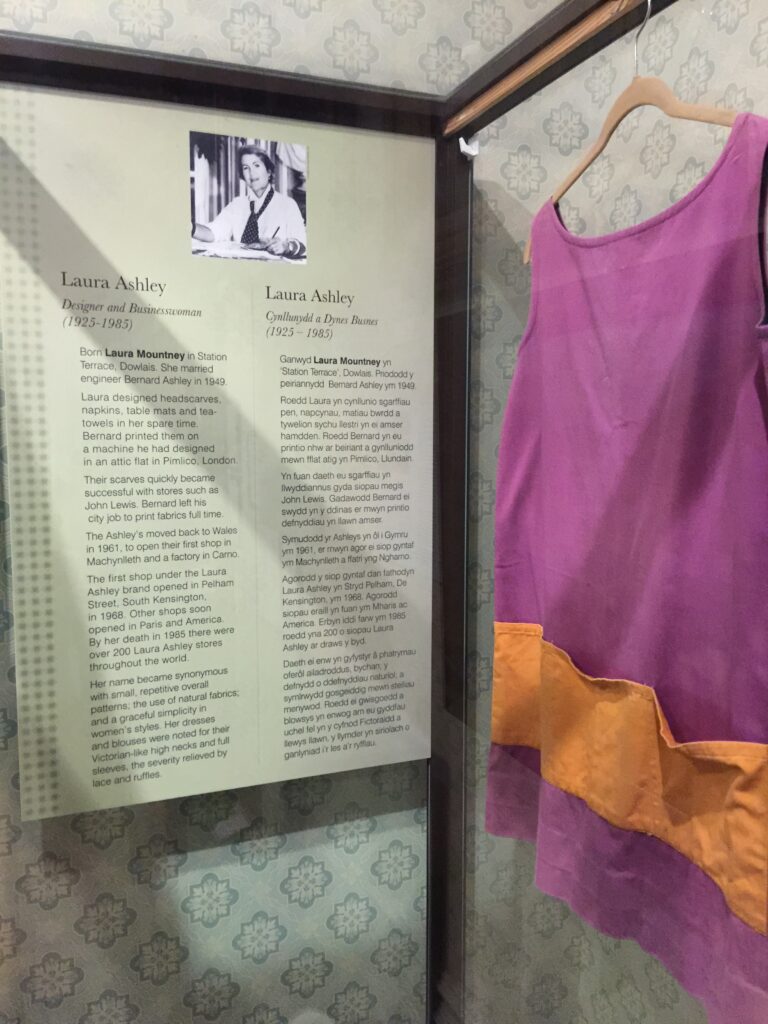
Bernard was the company chairman and Laura kept a close eye on fabrics. The success of the business meant that the Ashleys could afford a yacht, a private plane, the French Château de Remaisnil in Picardy, a town-house in Brussels and the villa Contenta in Lyford Cay, New Providence, Bahamas, later purchased for $8.5 million by TJ Maloney.
Just after her 60th birthday, Laura Ashley fell down the stairs of her daughter’s home in the West Midlands and was taken to hospital in Coventry, where she died 10 days later, on September 17, 1985, of a brain haemorrhage. She is buried in the churchyard of St John the Baptist, in Carno.
Two months after her death, Laura Ashley Holdings went public in a flotation that was 34 times oversubscribed. A memorial plaque to Laura Ashley, at the family’s former home, 83 Cambridge Street, Pimlico, was unveiled on July 5, 1994.
The Laura Ashley firm published three major books during her lifetime: Fabric of Society: A Century of People and Their Clothes 1770-1870 by Jane Tozer and Sarah Levitt and A House in the Cotswolds and The Laura Ashley Book of Home Decorating by Elizabeth Dickson and Margaret Calvin, with a foreword by Laura Ashley.
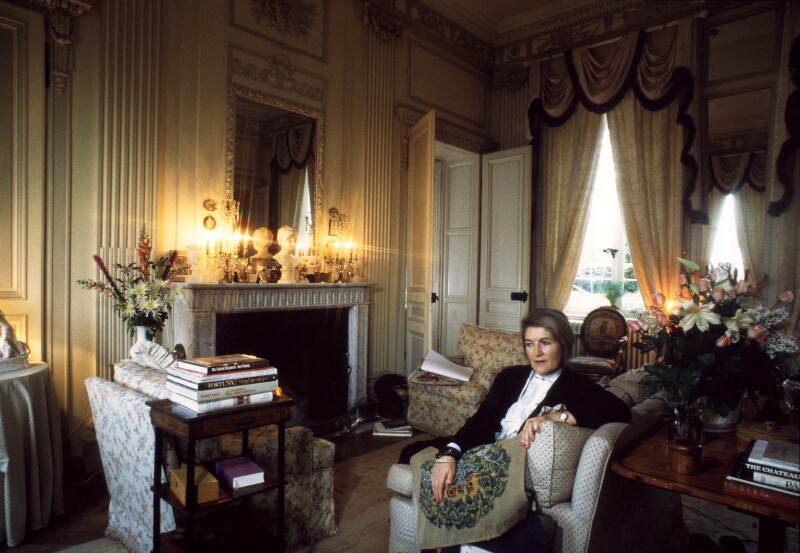
Through photographs of entire rooms, these volumes provided vivid glimpses of the environment of such novelists as Austen, Trollope, and Eliot. Perhaps even more, they serve as guides to many young people today on how to furnish and decorate their homes.
In 1975, Laura did not accept an OBE since Bernard was not offered an award. However, after her death, Bernard was knighted.
In 1987, The Laura Ashley Foundation was set up by Bernard in order to help people realize their talent and potential, the Ashley family actively involved in its day-to-day running.
RETURN TO WELSH GREATS IN PROFILE
BACK TO HOME PAGE